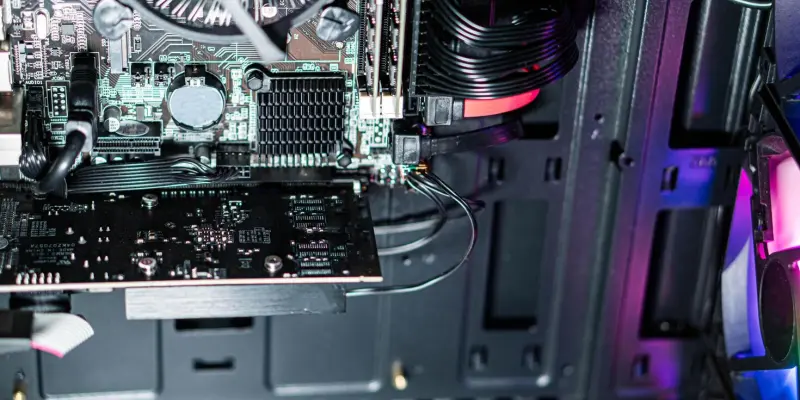In the ever-evolving world of graphics processing units, AMD’s Radeon RX 9070 GRE, also known as the Golden Rabbit Edition, has made its mark as a noteworthy contender in 2023. With a focus on delivering robust performance at a relatively affordable price point, this GPU is exclusively available in China. The RX 9070 GRE is built on AMD’s RDNA 4 architecture, utilizing the NAVI 48 die. This hardware architecture features 3,072 Stream Processors and 12 GB of GDDR6 VRAM, positioning it as a mid-level performer between the RX 9060 XT and the RX 9070. Interestingly, it mirrors its precursor, the RX 7900 GRE, in terms of gaming performance yet slightly lags because of its reduced VRAM from 16 GB to 12 GB, affecting certain demanding applications and workloads. Despite having less VRAM, the RX 9070 GRE showcases solid performance. It is just 5% slower than NVIDIA’s RTX 5070 and roughly 15% behind its higher-end counterpart, the RX 9070. This demonstrates the RX 9070 GRE’s efficiency in holding its ground through a blend of synthetic and real-world gaming benchmarks. More impressively, the RX 9070 GRE outstrips NVIDIA’s RTX 5060 Ti by an impressive 27%, highlighting its finesse in overdelivering on expectations within various computational challenges. By achieving this balance, AMD has strategically ensured the RX 9070 GRE stands out, providing a valuable alternative in a crowded market. This GPU fills a commercial gap, handling multiple roles effectively without making the leap to more premium-priced solutions.
Competitive Pricing and Market Impact
The financial aspect of the RX 9070 GRE cannot be overlooked, as pricing plays a crucial role in consumer decisions, especially in a market characterized by rapid technological advances and fierce rivalries. AMD has priced this GPU at a competitive sub-$500 figure, making it an economical choice without compromising too much on performance. In contrast to comparable offerings from NVIDIA, the RX 9070 GRE stands as a middle ground for gamers and enthusiasts looking for capable yet affordable hardware. This judicious approach by AMD aligns poignantly with market demands, which value performance closely linked with price efficiency.
Furthermore, AMD’s strategy reflects an insightful reading of market forces. By positioning the RX 9070 GRE as an affordable yet high-performing option, AMD has catered to an audience that desires premium-grade gaming experiences without the associated financial burden. As a result, it appeals to various consumers, including value-seekers and those unwilling to pay for the very latest luxury models but desiring a taste of high-end performance. It’s a symbiotic mix that resonates with both competitive gamers and casual users alike, emphasizing efficient engineering that meets practical gaming and computing needs.
Drawing Conclusions: AMD’s Balancing Act
In 2023’s rapidly advancing GPU landscape, AMD’s Radeon RX 9070 GRE, dubbed the Golden Rabbit Edition, has emerged as a significant player. Focused on delivering strong performance at a competitive price, this GPU is a China-exclusive. It’s crafted on AMD’s RDNA 4 architecture, featuring the NAVI 48 die, and boasts 3,072 Stream Processors along with 12 GB of GDDR6 VRAM. This places it as a mid-tier performer between the RX 9060 XT and RX 9070. While it follows in the footsteps of its predecessor, the RX 7900 GRE, its reduced VRAM, from 16 GB to 12 GB, causes a slight dip in performance for high-demand tasks.
Despite lesser VRAM, the RX 9070 GRE stands firm, trailing NVIDIA’s RTX 5070 by a mere 5% and its advanced sibling, the RX 9070, by about 15%. Its strength is evident when it eclipses NVIDIA’s RTX 5060 Ti by a striking 27%, proving its prowess in various computational benchmarks. By achieving this equilibrium, AMD ensures the RX 9070 GRE shines, filling a market niche for those seeking quality performance without the steep cost of high-end alternatives.

